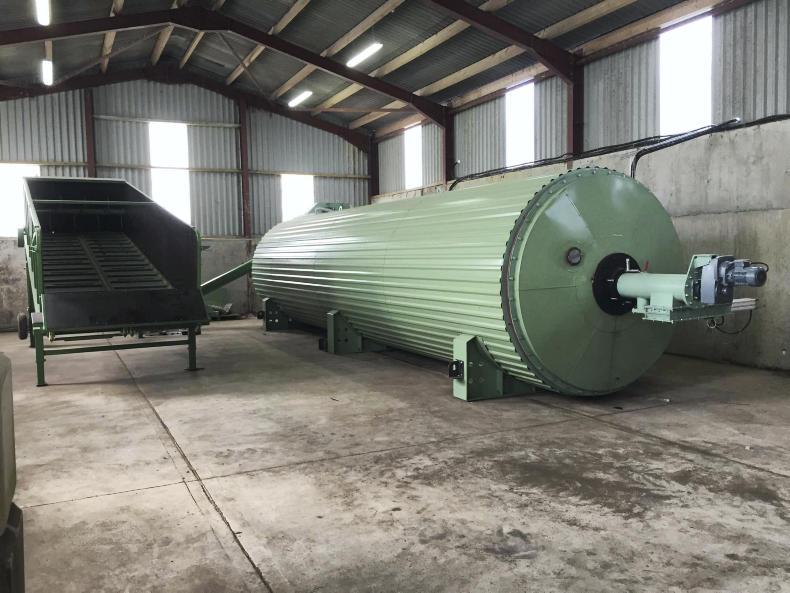The first dry anaerobic digestor (AD) in Ireland is in place on a poultry and beef farm in Co Monaghan and is due to start processing a mix of agricultural by-products into gas and nutrient-rich digestate this week.
The so-called thermophilic digestor is the size of a 40ft shipping container and was installed in an existing shed on the farm visited by the Irish Farmers Journal.
This demonstration unit will initially take in 10% poultry litter, 60% cattle slurry, 10% grass silage and 20% straw, said Eanna Tiernan, technical manager for Alchemy Utilities.
The company intends to use up to 25% poultry litter in this demonstration phase, but says this could be ramped up further.
This digestor takes in 25% to 40% DM material, while mesophilic or “wet” ADs typically require the mix to be under 10% DM.
“Our model is that we shouldn’t use grass silage because it should be used for cattle feeding,” said Tiernan.
“The land should be used for food production, not energy crops unless there is an excess.”
This is in contrast with plans recently unveiled by Gas Networks Ireland to include 20% of renewable gas in the national grid from farm-based wet AD, which would require around 10m tonnes of silage every year.
A Finnish engineer has been on site in Co Monaghan to help Alchemy install the technology imported from his home country. This includes computerised controls allowing his colleagues in Finland to operate the digestor remotely.
UCD will monitor progress as part of its AgroCycle research project.
The land should be used for food production, not energy crops unless there is an excess
The feedstock is to be mixed in a diet feeder and loaded onto a conveyor belt similar to the bed of a muck spreader. This will fill the digestor continuously, where constant temperature will facilitate the digestion of organic matter into biogas.
The gas will be stored in an outside sealed bag and burned in a test burner at first, with plans to heat the poultry houses at a later stage.
Alchemy plans to process the remaining digestate into dry, pelleted organic fertiliser, which can be mixed with synthetic compounds. This will require commercial on-farm units to comprise at least three digestors each.
Main revenue stream
“We see the fertiliser as the main revenue stream,” Alchemy chief executive Richard Griffin told the Irish Farmers Journal. “Gas is a by-product.”
He is confident that this will make the business viable without Government incentives, unlike wet AD, which he claimed was “inherently flawed”.
Griffin said the company would consider various financial options to deploy the technology on Irish farms, including the so-called energy service company (ESCO) model.
Benefits
In this case, the company makes the investment upfront and signs a contract with the farmer to share benefits.
“This will be site-specific,” Griffin said, with potential benefits to the farmer ranging from gas use if the farm has high energy needs, to access to discounted fertiliser, rent for the site occupied by the digestor and part-time work to operate it. However, Griffin said the main advantage to the farmer will be the outlet for manures. While his initial focus is on poultry and pig farms, he said that dairy farms would be suited to host dry ADs and contribute slurry.
The Alchemy TD technology demonstrated in Co Monaghan is a finalist in the Innovation Arena at next week’s National Ploughing Championships.






 This is a subscriber-only article
This is a subscriber-only article













SHARING OPTIONS: